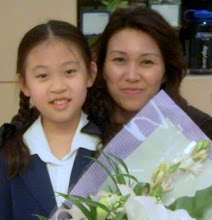| Everyone, from the youngest child to the oldest adult, experiences anxieties and fears at one time or another. Feeling anxious in a particularly uncomfortable situation never feels very good. However, with kids, such feelings are not only normal, they're also necessary. Experiencing and dealing with anxieties can prepare young people to handle the unsettling experiences and challenging situations of life.
Anxiety is defined as "apprehension without apparent cause." It usually occurs when there's no immediate threat to a person's safety or well being, but the threat feels real. Anxiety makes someone want to escape the situation — fast. The heart beats quickly, the body might begin to perspire, and "butterflies" in the stomach soon follow. However, a little bit of anxiety can actually help people stay alert and focused. Having fears or anxieties about certain things can also be helpful because it makes kids behave in a safe way. For example, The nature of anxieties and fears change as kids grow and develop:
As kids grow, one fear may disappear or replace another. For example, a child who couldn't sleep with the light off at age 5 may enjoy a ghost story at a slumber party years later. And some fears may extend only to one particular kind of stimulus. In other words, a child may want to pet a lion at the zoo but wouldn't dream of going near the neighbor's dog. Signs of Anxiety Typical childhood fears change with age. They include fear of strangers, heights, darkness, animals, blood, insects, and being left alone. Kids often learn to fear a specific object or situation after having an unpleasant experience, such as a dog bite or an accident. Separation anxiety is common when young children are starting school, whereas adolescents may experience anxiety related to social acceptance and academic achievement. If anxious feelings persist, they can take a toll on a child's sense of well being. The anxiety associated with social avoidance can have long-term effects. For example, a child with fear of being rejected can fail to learn important social skills, causing social isolation. Many adults are tormented by fears that stem from childhood experiences. An adult's fear of public speaking may be the result of embarrassment in front of peers many years before. It's important for parents to recognize and identify the signs and symptoms of kids' anxieties so that fears don't get in the way of everyday life. Some signs that a child may be anxious about something may include:
Apart from these signs, parents can usually tell when their child is feeling excessively uneasy about something. Lending a sympathetic ear is always helpful, and sometimes just talking about the fear can help a child move beyond it. What's a Phobia? When anxieties and fears persist, problems can arise. As much as a parent hopes the child will grow out of it, sometimes the opposite occurs, and the cause of the anxiety looms larger and becomes more prevalent. The anxiety becomes a phobia, or a fear that's extreme, severe, and persistent. A phobia can be very difficult to tolerate, both for kids and those around them, especially if the anxiety-producing stimulus (whatever is causing the anxiety) is hard to avoid (e.g., thunderstorms). "Real" phobias are one of the top reasons children are referred to mental health professionals. But the good news is that unless the phobia hinders the everyday ability to function, the child sometimes won't need treatment by a professional because, in time, the phobia will be resolved. Focusing on Anxieties, Fears, or Phobias Try to answer the following questions honestly: Is your child's fear and behavior related to it typical for your child's age? If the answer to this question is yes, it's a good bet that your child's fears will resolve before they become a serious cause for concern. This isn't to say that the anxiety should be discounted or ignored; rather, it should be considered as a factor in your child's normal development. Many kids experience age-appropriate fears, such as being afraid of the dark. Most, with some reassurance and perhaps a night-light, will overcome or outgrow it. However, if they continue to have trouble or there's anxiety about other things, the intervention may have to be more intensive. What are the symptoms of the fear, and how do they affect your child's personal, social, and academic functioning? If symptoms can be identified and considered in light of your child's everyday activities, adjustments can be made to alleviate some of the stress factors. Does the fear seem unreasonable in relation to the reality of the situation; and could it be a sign of a more serious problem? If your child's fear seems out of proportion to the cause of the stress, this may signal the need to seek outside help, such as a counselor, psychiatrist, or psychologist. Parents should look for patterns. If an isolated incident is resolved, don't make it more significant than it is. But if a pattern emerges that's persistent or pervasive, you should take action. If you don't, the phobia is likely to continue to affect your child. Contact your doctor and/or a mental health professional who has expertise in working with kids and adolescents. Helping Your Child Parents can help kids develop the skills and confidence to overcome fears so that they don't evolve into phobic reactions. To help your child deal with fears and anxieties:
The key to resolving fears and anxieties is to overcome them. Using these suggestions, you can help your child better cope with life's situations. |
Date reviewed: November 2007
Originally reviewed by: David B. Sheslow, PhD







沒有留言:
張貼留言